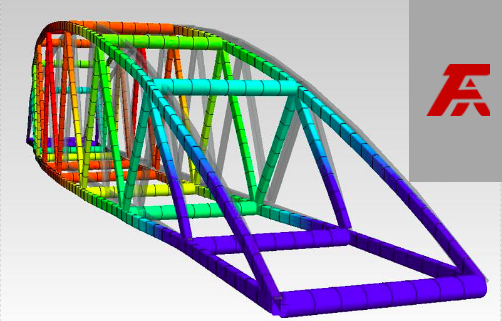-

What Do You Understand By Finite Element Analysis?
By Fernandes 23 Feb 2018There are a lot of mechanical and industrial terms used in the field of construction design to comprehensively understand and quantify the physical phenomena of a given substance. It can be structural or fluid behaviour, wave propagation, thermal support, growth of biological cells and many. However, it is necessary to use mathematics to determine all these circumstances.Therefore, these processes are described with the help of Partial Differential Equations (PDEs). But to solve these PDEs in a computer system, a number of techniques have been developed and one of them is Finite Element Method (FEM).The Finite Element Method is actually a technology which is used to perform Finite Element Analysis (FEA) of a given substance to understand the physical phenomenon.What are the applications of FEM?Finite Element Method is generally used in the modelling of different mechanical applications that are related to civil engineering and aerospace. One of the most advantageous factors of this method is its application in coupled problems including thermo-mechanical and thermo-chemo-mechanical problems, fluid-structure interaction, piezoelectric, biomechanics, biomedical engineering, ferroelectric and electromagnetics.However, there are many alternative methods apart from FEA, but most of their commercial applicability is yet to be proved.Partial Differential EquationsIt is important to determine the different classifications of PDEs and their benefits with FEM before starting Finite Element Analysis. Remember, that FEM is a tool and it can be only as good as its user.Well, Partial Differential Equations can be classified into hyperbolic, parabolic and elliptic types. Initial conditions must be improved at first whenever you try to solve these differential equations. This includes Wave equation (Hyperbolic), Fourier law (Parabolic) and Poisson equation (Elliptic). Basically, there are two main approaches when it comes to solving elliptic PDEs. They are Finite Difference Methods (FDM) and Variational/Energy Methods. However, FEM falls into the second category.Hyperbolic PDEs are generally related to jumping solutions like wave equation. However, at the early stages of its discovery the FEM technology used ion and the process was believed to be unsuitable for solving hyperbolic PDEs. But in the recent years, several modifications have been made to extend the applicability of FEM technology.It is important to consider the outcome of using a specific technology which is unsuitable for the type of PDE. This may not be possible for a common person. This is why it's worth hiring a mechanical engineer who can ensure proper usage of FEA and give an informative result.To know more about FEA and various benefits, stay tuned to our blog space.
0 Comment
Leave a Comment
Your email address will not be published. Required fields are marked *






